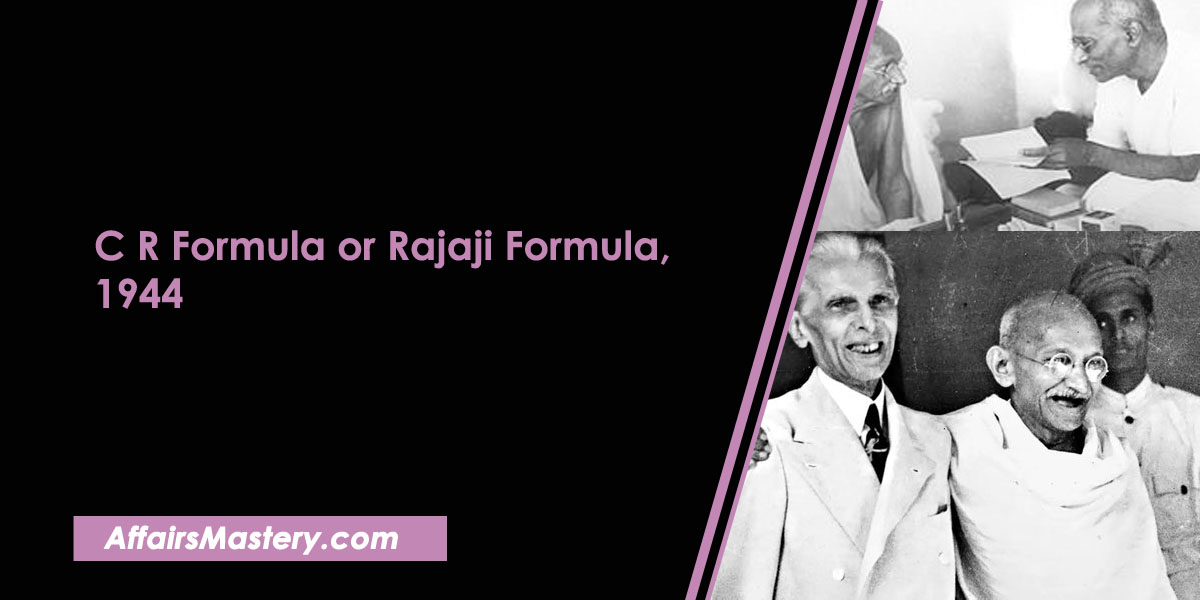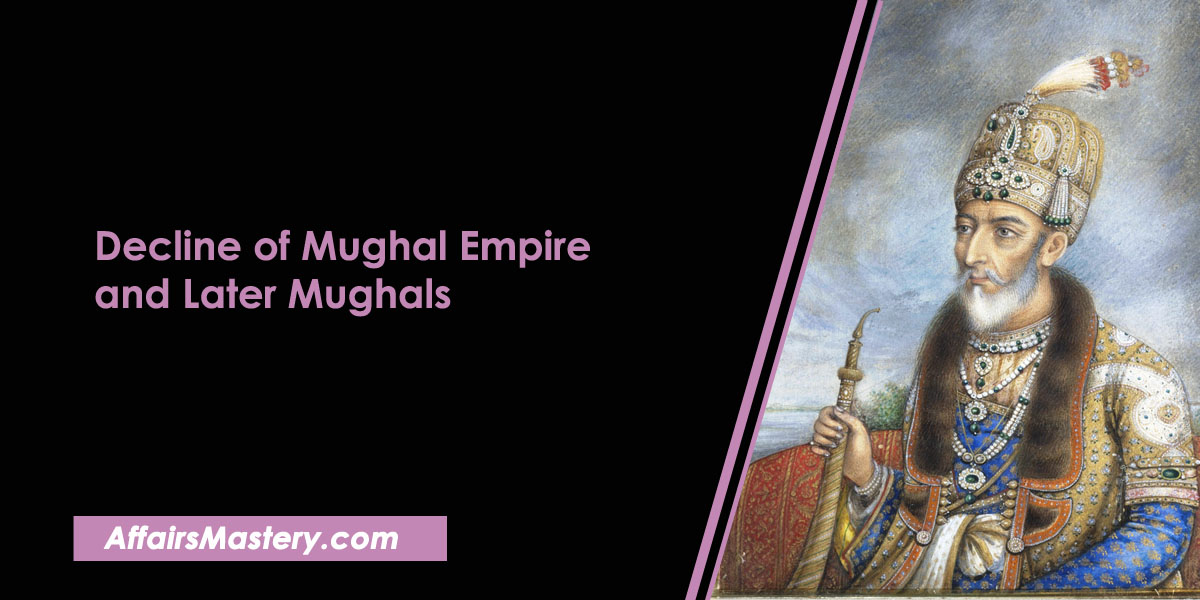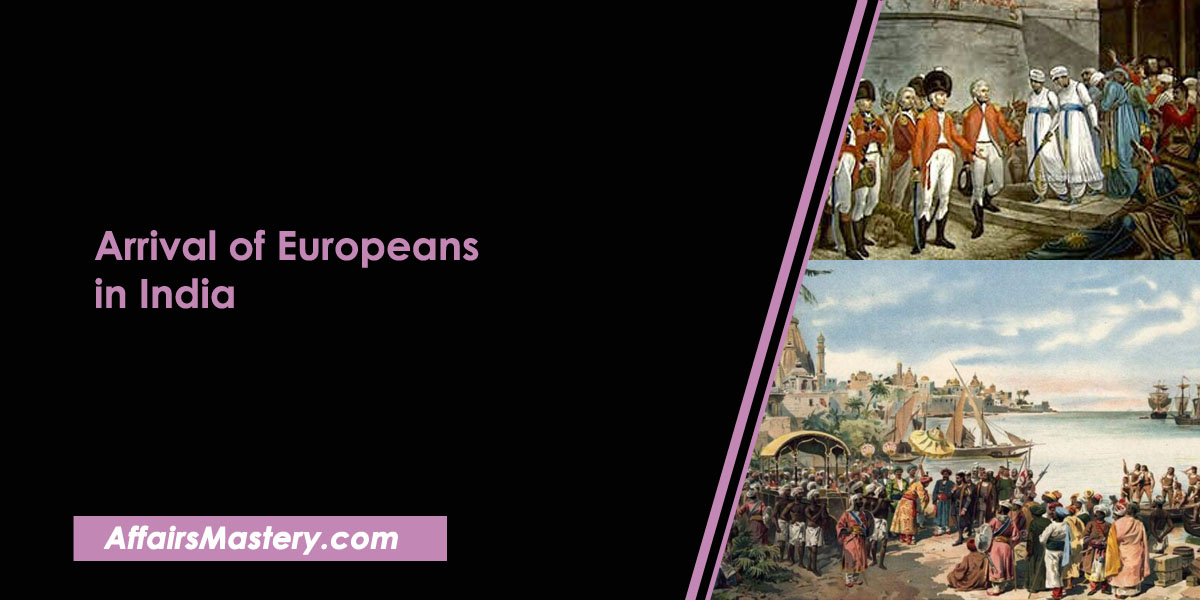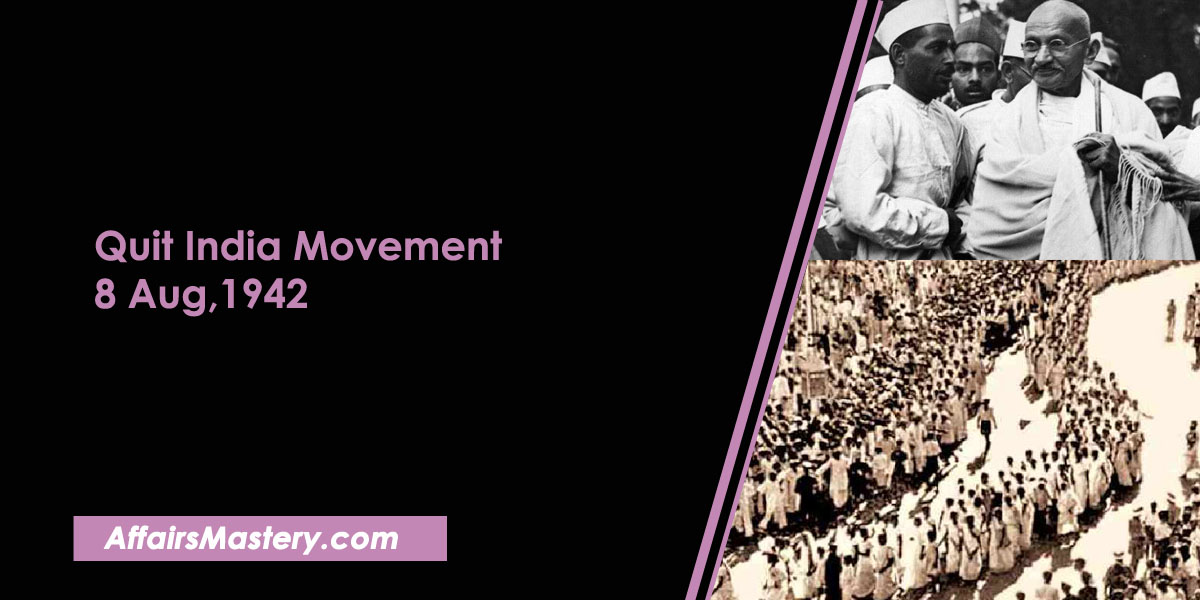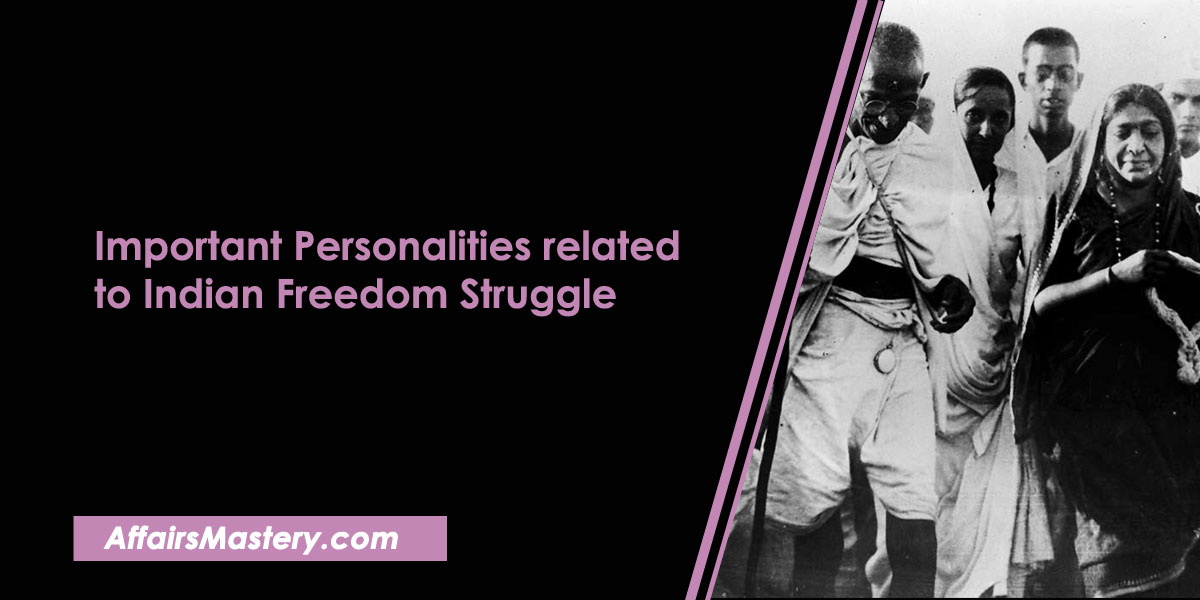C R Formula or Rajaji Formula, 1944 – About, Main Points (Important Short Notes)
C R Formula or Rajaji Formula, 1944. Chakravarti Rajagopalachari proposed a solution to the political stalemate between All India Muslim League and Indian National Congress regarding British India’s independence. This proposal was an attempt to bring both sides together in order for them to reach an agreement on how best move forward with their respective goals of achieving freedom from Britain.
Important Short note for various exams. From the perspective of an examination like Civil services, State exams, SSC, Banking, Railways and any other One Day exam, all the necessary facts and information are listed below.
About
- C.R. formula sought to solve the political deadlock between the All-India Muslim League and Indian National Congress on Independence of India.
- The League’s stance was that the Muslims and Hindus of British India were two distinct nations, thus giving the Muslim population a right to their own nation.
- The Congress, which was composed of both Hindu and Muslim members, strongly opposed the idea of partitioning India due to its potential for creating a divide between two major religious groups.
- At the beginning of World War II, the British government had a plan to divide Indian political leaders into two camps in order to prevent them from making progress towards independence. This was done by exploiting existing differences between various factions.
- At this critical moment, Rajagopalachari proposed that the Congress should present an offer to the League in order to move forward with negotiations and find common ground.
Main points of formula
- The Muslim League has decided to support the Congress Party’s demand for India’s independence.
- The League has agreed to cooperate with Congress in order to form a provisional government at the centre.
- After the end of war, the entire population of Muslim majority areas in the North-West and North-East India to decide by a plebiscite, whether or not to form a separate sovereign state.
- If the partition is accepted, then both parties must come to an agreement in order to ensure that defense, commerce and communications are all properly safeguarded.
- The terms mentioned above will only be effective if England officially transfers all of its powers to India, allowing the country to become a fully independent nation. Gandhi placed the CR formula as his proposal to Jinnah.
Response to the formula
- Gandhi-Jinnah talks failed after two weeks of negotiations. Jinnah thought that this plan would cripple Muslims and cut the organs of Pakistan.
- Muslims as a separate nation should have right to self-determination.
- Despite the Congress being willing to work with the League for India’s independence as a unified nation, it was clear that the League had no interest in this and only wanted their own separate country
- Furthermore, a nation without the right to defend itself cannot protect its sovereignty and maintain an independent foreign policy.
- Additionally, Hindu leaders such as Vir Savarkar strongly opposed the C R formula and spoke out against it.
Failure of the formula
- The formulas and proposals that were put forward had the primary goal of creating a separate nation – Pakistan – but it was mainly populated by non-Muslims, which posed an religious challenge.
- Jinnah was apprehensive that if the vote were to be cast, he would have no choice but to divide Punjab and Bengal into two separate entities.
- The plebiscite was to be held for the entire population, which could have led to disagreements about the nation’s partition. Therefore, Jinnah strongly objected to the poll being held for all people and instead argued that it should only be conducted among Muslim citizens.
If you find our content helpful and interesting, please consider joining us on Telegram @affairsmastery_official to show your support. We would really appreciate it!
Related articles
- Important Battles in Indian History
- Important treaties in Indian history
- List of Foreign Travellers who came to India
- List of Governor General of India and Viceroy of India
- Robert Clive – Important Short Notes for Exams
- Warren Hastings – Important Short Notes for Exams
- Lord William Bentinck – Important Short Notes for Exams
- Lord Canning – Important Short Notes for Exams
- Lord Mountbatten – Important Short Notes for Exams
- C. Rajagopalachari – Important Short Notes for Exams
- Lord Wavell – Important Short Notes for Exams
- Lord Linlithgow – Important Short Notes for Exams
- Lord Willingdon – Important Short Notes for Exams
- Non Cooperation Movement (1919-1922)
- Important Personalities related to Social Movements of India
- List of Important Personalities of Indian Freedom Struggle
- List of Important Books on Revolt of 1857 and their Author
- Important Leaders of 1857 Revolt and their places
- Constituent Assembly of India and its Composition: Important Short Notes
- Important Tribal Movements in India
- Direct Action Day 1946: Important Short Notes for Exams
- Interim Government of India, 1946 and its members
- Important Socio Religious Reform Movements in India – Short Notes
- Khilafat Movement (1919-1924) – Important Short Notes for exams
- Lucknow Pact, 1916 – About, Features, Outcome (Important Short Notes)
- Wavell Plan, 1945 – About, Main Points (Important Short Notes)
